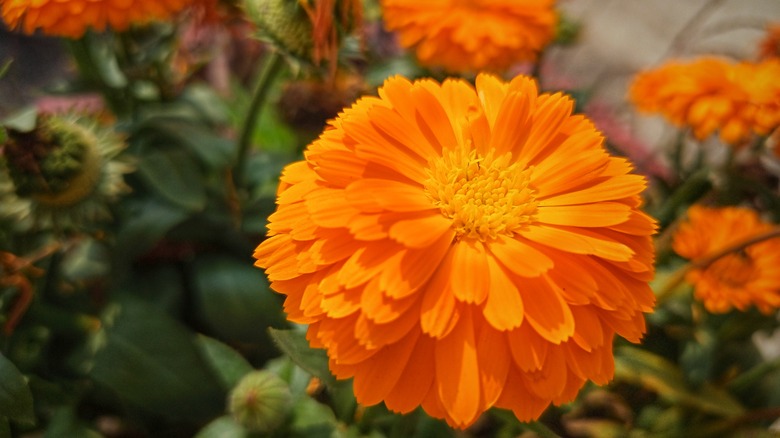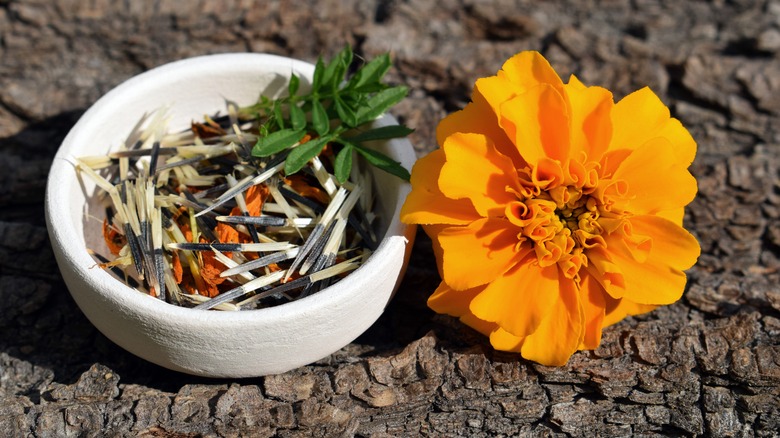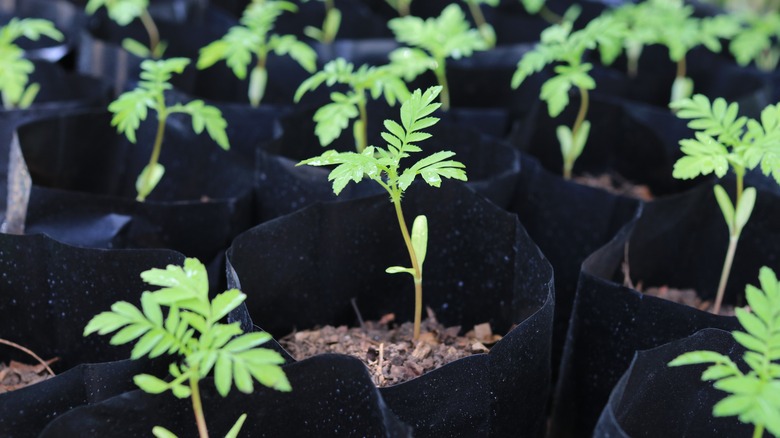Tips To Grow Flourishing Marigold Flowers From Seeds
Marigolds are stunning flowers that can be easily grown from seeds. These delightful orange and yellow blooms not only add color to your garden but have many other advantages as well. They attract beneficial insects such as bees, hoverflies, ladybugs, and parasitic wasps. This is why seasoned vegetable gardeners like to grow marigolds in their veggie patch. In fact, there are many benefits to planting marigolds in your garden. These plants are very easy to grow and if you choose to grow them from seeds, you'll have a lot of different varieties to choose from.
Marigold seeds can be sown directly in the garden in zones 2 through 11 as advised by the University of Minnesota Extension. They should be sown in spring once all danger of frost has passed. They'll need a sunny spot in the garden that gets at least six hours of sunlight daily. If you want to get a head start with your seeds, you can grow them indoors and then plant them out into the garden in a nice sunny spot once the last frost date has passed. Here's how to grow these beneficial flowers in your garden from seeds, either by sowing them directly in the garden or starting the seeds indoors.
How to sow marigold seeds directly in the garden
Choose a nice sunny spot in the garden because these plants are sun-lovers. Marigolds can adapt to most soil types as long as the soil is free-draining. The ideal pH for these plants is between six and seven. Before sowing the seeds, make sure that the soil temperature has reached 65 degrees Fahrenheit. The best time of the year to plant marigolds is in spring.
Marigold seeds are relatively small, so it's important not to plant them too deeply. The seeds themselves only contain enough energy to produce a small shoot that needs to break through the surface of the soil so that it can continue to grow. If these seeds are buried too deeply, the shoot will run out of energy before it can break through the soil surface. The best tip is to just scatter the seeds evenly over the soil and then cover them very lightly. You can use a sieve filled with fine soil or sand to shake over the seeds so that they're just lightly covered. Use the hose with a very fine spray attachment to water the seeds so as not to dislodge them.
You should start to see the first seedlings appear in around four to 10 days. But it might take up to two months before your young plants start to flower. Once they do, you can enjoy their colorful blooms throughout summer and into the fall.
How to start your marigold seeds indoors
To give your marigolds a head start, you can plant the seeds indoors in small pots or seedling trays. This means that you'll get flowers sooner once the young plants are transplanted into the garden. Consider starting your marigold seeds around one month before the last frost date which can be as early as March.
Fill your pots or seedling trays with seed-raising mix DIY your own organic seed starting mix. Alternatively, you can create your own seed starter pots from papier-mâché. When sowing the seeds, remember not to plant them too deeply. Just scatter them over the surface of the mix and then cover them very lightly with more of your mix.
Place your pots in a warm spot that gets plenty of light. A sunny windowsill is ideal. You also want to make sure that the soil is kept moist but not wet. You'll start to see the seedlings pop up within four to 10 days. Keep monitoring your seedlings to make sure that they're not allowed to dry out. Once the tiny plants have their first true leaves and are around 2 to 4 inches tall, they're ready to transplant into the garden. But make sure that there's no chance of frost and that the soil temperature has reached at least 65 degrees Fahrenheit before planting out your seedlings.


